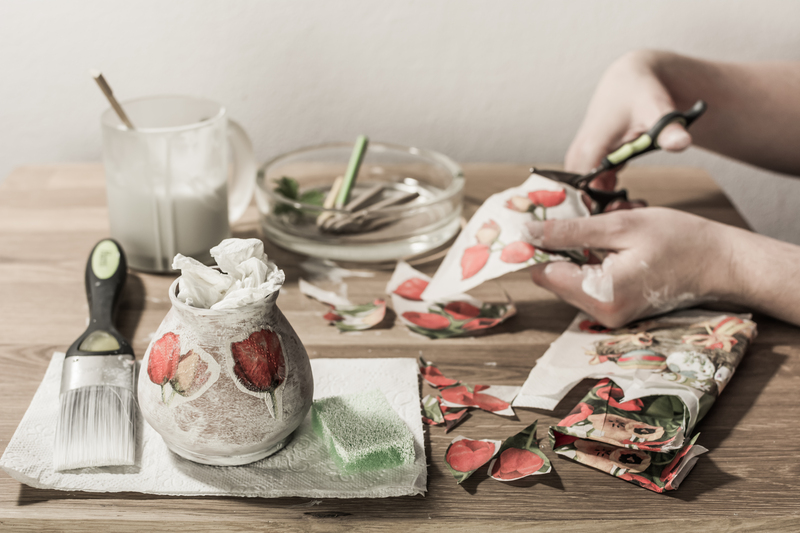How to Prepare Old Pots and Pans for Recycling Drop-Off
Are your kitchen cupboards overflowing with unused or damaged cookware? Old pots and pans can easily pile up as we upgrade to new kitchen essentials. Instead of tossing cookware in the regular trash, recycling offers a more sustainable solution. However, preparing old pots and pans for recycling drop-off requires special steps to ensure they're accepted and properly processed. In this comprehensive guide, we'll walk you through everything you need to know about responsibly recycling cookware.

Why Should You Recycle Old Pots and Pans?
Recycling old kitchenware is not only beneficial for the environment but also supports a sustainable future. Here are some important reasons to recycle your old pots and pans:
- Reduces landfill waste: Metal cookware in landfills takes up valuable space and can take hundreds of years to break down.
- Conserves resources: Metals and other materials recovered from recycled pots and pans can be reused to manufacture new products, reducing the need for raw material extraction.
- Lessens environmental impact: Recycling significantly cuts down on the energy, greenhouse gas emissions, and pollution associated with mining and refining metals.
- Supports the circular economy: Properly recycling old pans is an easy way to contribute to a more sustainable economy.
Types of Pots and Pans That Can Be Recycled
Not all cookware is created equal when it comes to recycling pots and pans. Understanding which items are accepted by your local recycling program or scrap yard is the first step.
Materials Commonly Accepted for Recycling
- Aluminum: Lightweight and often used for saucepans; highly recyclable.
- Stainless Steel: Very durable and easy to recycle; used in premium cookware.
- Copper: Less common but valuable in the recycling process.
- Cast Iron: While heavy, cast iron pans are 100% recyclable.
Cookware Younger Recyclers May Not Accept
- Non-stick pans (Teflon or PTFE): The coating may not be recyclable and sometimes needs to be removed.
- Ceramic-coated or purely ceramic cookware: Often cannot be recycled with metals.
- Pans with plastic/rubber handles or lids: These parts must usually be removed before recycling.
Pro Tip: When in doubt, call your local recycling center or scrap metal yard to ask about their policies on old cookware recycling.
How to Prepare Your Old Pots and Pans for Recycling Drop-Off
Ensuring your pots and pans are properly prepped before you take them to a recycling drop-off center helps streamline the process and increases the likelihood they'll be accepted. Follow these expert steps:
1. Clean Your Cookware Thoroughly
- Remove all food residue, grease, and grime. Give your items a deep scrub, or run them through your dishwasher on a heavy-duty setting.
- If stains persist, soak pans in a mix of water and baking soda or vinegar. A clean pan is less likely to contaminate the recycling stream and more likely to be accepted.
2. Remove Non-Metal Parts
- Detach any plastic, rubber, wooden, or glass handles and lids.
- Use a screwdriver or pliers to unscrew or pry off handles, knobs, and other attachments.
- Dispose of these non-metal components as per your local recycling (or trash) guidelines.
3. Separate Materials If Possible
- If your cookware is made of two or more types of metal (e.g., a copper bottom and aluminum body), separate them if feasible. This increases the quality and value of the recyclable metal.
- If separation is not possible, make sure to inform the recycling facility about the materials.
4. Address Non-Stick Coatings and Hazardous Elements
- For non-stick pans, especially those with old or damaged coatings (e.g., Teflon), contact your local recycling center to find out if and how they accept them. Some centers do not accept non-stick coatings due to chemical content.
- If the center requires it, remove the coating using a sanding tool or strong abrasive. Always wear protective gear, such as gloves and a mask, to avoid inhaling fumes or dust.
Where to Recycle Old Pots and Pans
Once your cookware is prepped, you're ready to find a suitable recycling destination. Some options include:
- Scrap Metal Yards: Most accept metals like stainless steel, cast iron, aluminum, and copper cookware.
- Municipal Recycling Centers: Some curbside programs accept metal cookware, but confirm ahead, as many do not.
- Special Household Hazardous Waste Events: Some communities organize drop-off events for items like non-stick pans or cookware with mixed materials.
- Retailer Take-Back Programs: Some kitchenware retailers and manufacturers offer take-back or recycling programs for used products.
What Happens to Pots and Pans After Recycling?
After you've dropped off your old cookware at a designated facility, here's what typically happens:
- Your pots and pans are sorted by material type.
- The metal is cleaned and processed to remove impurities or coatings.
- The purified metal is melted and formed into blocks, ready to be manufactured into new products--sometimes even new cookware!
This process allows for a continuous lifecycle, making kitchen pot and pan recycling a crucial part of the sustainability chain.
Alternatives to Recycling: Donating, Selling, or Upcycling Old Cookware
Before you commit to recycling, consider if your old pots and pans are suitable for repurposing or donating. Here are some alternative options:
- Donation: If the cookware is still in good condition, donate to thrift shops, shelters, or community kitchens. Many organizations welcome usable kitchenware for those in need.
- Sell or Give Away: List items on local classifieds or freecycle groups. Students and new households may appreciate used pots and pans.
- Upcycling: Get creative! Old pans make excellent flowerpots, wall decor, or even clock faces. A bit of imagination can give them a new life outside the kitchen.
Tips for Buying Recyclable Cookware in the Future
If you're replacing your old cookware, keep sustainability in mind. Buying recyclable pans helps reduce waste and simplifies disposal later. Look for these features:
- Uncoated stainless steel or cast iron pans with minimal plastic parts.
- Cookware with removable handles and knobs.
- Brands that offer recycling or take-back programs.
Choosing eco-friendly cookware is an investment in a healthier planet.
Frequently Asked Questions About Preparing Pots and Pans for Recycling Drop-Off
Can I put pots and pans in my curbside recycling?
No, most municipal curbside recycling programs do not accept large metal objects like cookware. Always check your local guidelines; typically, you must bring metal cookware to a drop-off or scrap metal facility.
What if my pans have non-metal parts I can't remove?
Some centers have tools or procedures for separating materials, but it's best to remove as much non-metal as possible. If you can't, inform the facility staff so they can process the item correctly.
Are non-stick pans recyclable?
Some recycling centers accept non-stick pans, while others do not because of chemical coatings. Call ahead or check your center's website. If accepted, remove the coating if possible; otherwise, you may have to dispose of them differently.
Is there a fee for recycling old pots and pans?
Many scrap yards accept metal cookware for free--and in some cases, you may even receive payment based on the metal's value. Municipal centers are usually free, but special events or hazardous waste drop-offs may charge a fee.
What else can I recycle along with my pots and pans?
Scrap yards often accept other metal items such as old utensils, baking sheets, wire racks, broken appliances, and even metal furniture. Verify with your chosen facility for a full list.

Conclusion: The Importance of Responsible Pots and Pans Recycling
Preparing your old pots and pans for recycling drop-off not only conserves vital resources but also minimizes environmental harm. By properly cleaning, separating, and dropping off your cookware at suitable facilities, you ensure it gets a new lease on life as part of future products. Next time you update your cookware, remember: responsible recycling starts at home!
By following these steps, you'll be doing your part for the environment and leading by example in your community. If in doubt, contact your local recycling center to ensure your pots and pans are prepped for a seamless, eco-friendly drop-off!
Further Resources
Start preparing your old pots and pans for recycling drop-off today and contribute towards a cleaner, greener tomorrow!